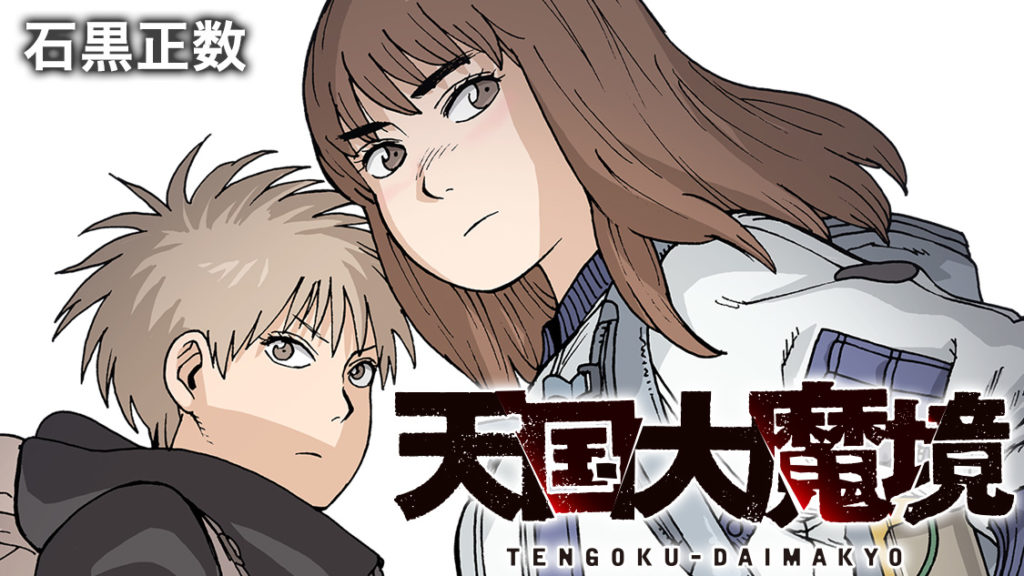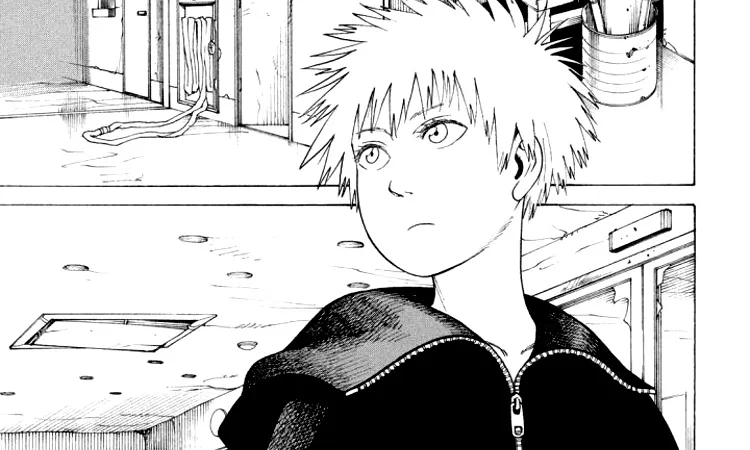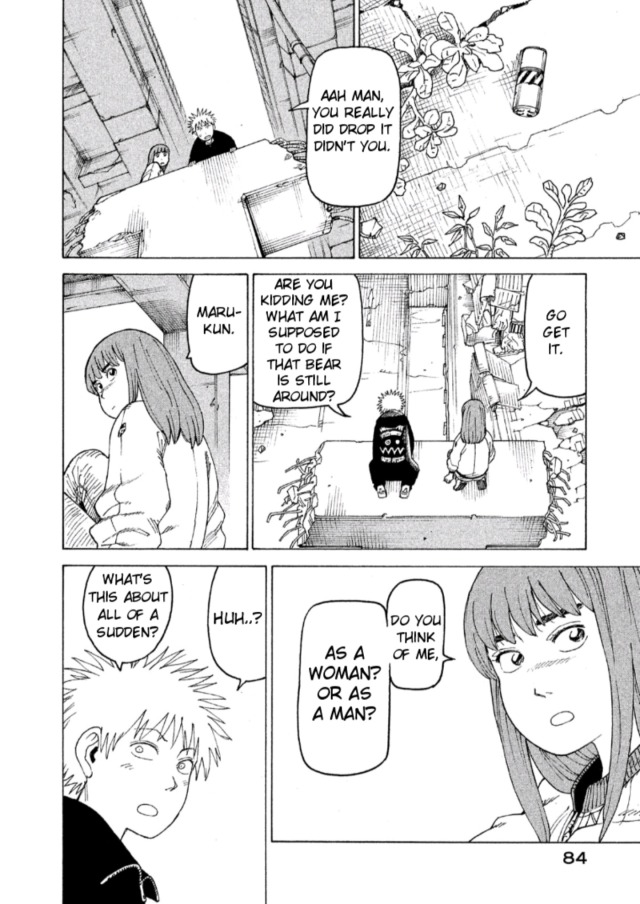Manga: Heavenly Delusion
November 23, 2022 · 0 comments
By Jeannette Ng.

Masakazu Ishiguro’s Heavenly Delusion is a sprawling saga through the urban wastelands of a post-apocalyptic Japan, as we follow a teenager named Maru looking for “heaven”, alongside a girl who shares his face. Kiruko accompanies him as a hired bodyguard by their bond soon grows deeper and more complicated than that.
This quest for “heaven” is a meandering one. Before they can go there, they must first answer the question: what is heaven? This prompts any number of vague, even philosophical discussions as strangers flounder at the thought of such happiness in a frequently hopeless world. Some leads simply bring them to a farming community with a food surplus, others take them to a group of idealists looking to rebuild the world that once was. Their futility of their quest is something both of them are very aware of, but Maru simply doesn’t have anything else to do after the death of his mentor and travelling with Maru gives Kiruko’s own search for a lost loved one some much needed structure.
Kiruko and Maru’s misadventures are intercut with those of a group of children living in a secluded facility with vast indoor gardens. It is the plucking of a tomato from a vine and sharing it with a sick child that opens the manga — an unavoidably Edenic evocation. A rogue question during an electronic test prompts Tokio to ask uncomfortable questions of these seemingly idyllic surroundings. When Tokio eventually asks the Director of the nursery what is outside of what’s outside, the only answer we get is that it is simply “hell”.

And “hell” is a certainly good description of the old world’s rotting carcass, infested with mutated monstrosities commonly called Man-Eaters. Kiruko and Maru prove better equipped than most when it comes to fending off these eldritch abominations, but few victories come without a cost.
Scavenging, fighting mutants and a quest to reach an idealised place is something of a post-apocalyptic genre staple now — the Fallout and Wasteland games come to mind, as well as any given zombie story where the protagonists are trying to find that mythic community of immune survivors. But this specific combination reminded me most strongly of the recent webcomic Kipo, adapted by Netflix into the animated Kipo and the Age of Wonderbeasts. There is also something of The Promised Neverland here as well, with the biblical allusions and special children, though that of course told its “something is wrong at this creepy orphanage” and “journey through a hostile world of monsters” plots one after the other rather than simultaneously.
There is a childishness — a roundness — to Ishiguro’s character designs that rather belies his dark themes and elaborately plotted twists. It’s not that they seem particularly cute or even moé, so much as something in me expects these characters to be inhabiting – a simpler, or at least, kinder story. This disconnect works in the material’s favour and the horror that follows feels all the grimmer and grimier as a result.
Not that Heavenly Delusion has any shortage of steely-eyed grim-mouthed heroism, but there remains a childishness to these characters in their moments of banter. The recurring joke about both Kiruko and Maru’s inability to bequeath “cool” names to their various abilities and gadgets grounds them. These aren’t pint-sized-adults ready to challenge the heavens and take on all the hells; they’re still basically children.
There is a clear divide between the adults and the children, not simply in the way they’re realised in the art, but also narratively – it has been fifteen years since the unknown event that destroyed human civilisation. There is a visceral generational divide between those who remember the old world and those who not. For all their childish cynicism, the young seem capable of a hope that the old cannot fathom with their nihilism born of the apocalypse.

Every new settlement Kiruko and Maru find presents them with more deceptions and self-delusions. Few are wholly pure in their intentions and even a purchased map can easily lead them astray. But amid the many stand-offs, confrontations and betrayals, there a theme concerning identity and the body. There is a mother who is fiercely protective of a monster she believes to somehow be her child. The bodies of the children at the facility are both strong and supernaturally capable but at the same time rotting from within from an unknown disease. The weakness and corruptibility of flesh proves a deep well for horror, especially as we delve into Kiruko’s past in the second volume and learn the reason why there is a scar that runs all the way around Kiruko’s skull. Is it a continuity of flesh that makes us who we are, or is it the delusion of thought and memories? Is it our minds that matter or is it the meat that moves us? Is the female double Maru is searching for simply a twin or is there something deeper and stranger going on?
There are few concrete answers even as the revelations and twists pile up. There is plenty to disquiet in the nursery facility side of the story, from the strange monsters drawn by Kona to the unsettling appearance of the babies the children sneak around to visit. Recurring symbols and names hint at further connections, all feeding intriguing theories and as a reader one is also privy to more information than the characters. It is easy to think that my own eyes are the only ones unclouded by delusion and that only I with the omniscience granted to me by the narration can understand what is actually happening. But even that feels at times pleasingly unreliable.
Jeannette Ng is the author of Under the Pendulum Sun. Heavenly Delusion is published by Denpa and available through Anime Limited.
Leave a Reply